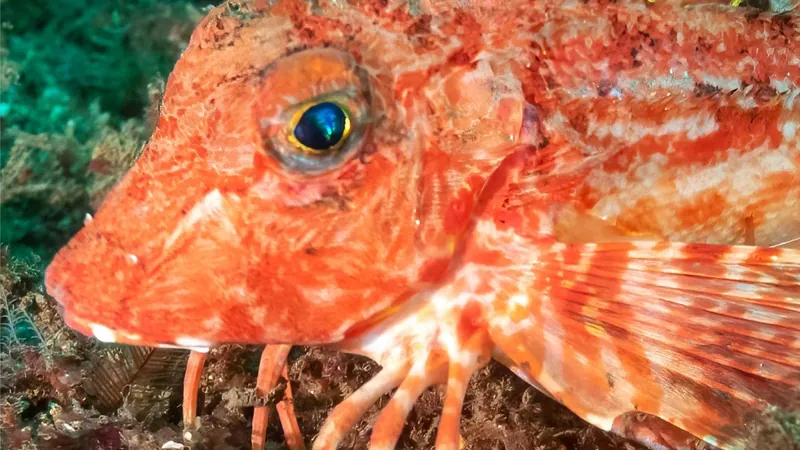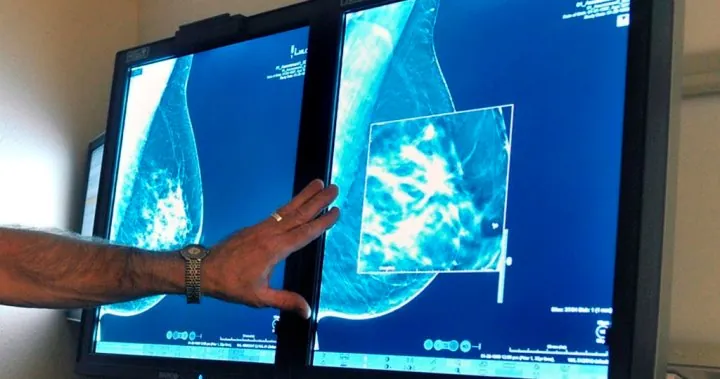
Discover the "Walking Fish" That May Uncover the Secrets of Human Evolution!
2024-09-26
Introduction
A remarkable species of fish, dubbed the "walking fish," has been captivating scientists and potentially unraveling the mystery of how humans evolved to stand upright millions of years ago. This unusual creature, known as the sea robin, has developed six leg-like structures that allow it to scuttle across the ocean floor and forage for prey, providing a fascinating link between aquatic and terrestrial life.
Unique Adaptations
At first glance, the sea robin's appendages resemble limbs; however, they are actually fin extensions that have adapted to the fish's unique lifestyle. Recent studies reveal that the genetic mechanisms behind the development of these "legs" in sea robins share similarities with the genes responsible for human limb formation. This intriguing connection could shed light on our own evolutionary history.
Research Findings
The specific species of interest, Prionotus carolinus, has shown itself to be exceptionally sensitive to touch, equipped with specialized sensors that enable it to detect and taste prey buried within the sediment. Researchers from Stanford and Harvard universities recently published their findings in the journal *Current Biology,* suggesting that these adaptations might parallel the evolutionary changes that allowed our ancestors to walk upright on land approximately six million years ago.
Scientific Insights
David Kingsley, a professor at Stanford, remarked on this evolutionary link, stating, "It's fascinating to see how land animals evolved from fish, and it’s certainly not surprising that we find commonalities in the genetic development of limbs." He added that the gene involved in the growth of the sea robin's fins—and ultimately legs—is one that also plays a vital role in the skeletal structure of humans.
Ecological Context
Sea robins, or gurnards as they are also known, inhabit tropical waters worldwide and primarily survive on a diet of worms and crustaceans. Interestingly, some species can be encountered in British waters, where they often get caught as bycatch in fishing nets.
Behavioral Observations
The research team was drawn to the sea robin's unique attributes after observing the fish's distinct ability to locate hidden food sources, often attracting the company of other marine creatures. Corey Allard, a biologist at Harvard, highlighted that these fish represent a species with an extraordinary and novel trait—an adaptation perfect for survival.
Sensory Capabilities
Delving further, the researchers discovered that P. carolinus has special sensory structures in its legs, known as papillae, which function similarly to taste buds in human tongues. Nicholas Bellono, an associate professor at Harvard, exclaimed, "Isn't it wild? This fish not only developed legs using the same genetic material that shapes our limbs, but it also repurposed them to taste hidden food using mechanisms akin to our own tasting systems."
Diverse Traits
However, not all sea robins share this trait. Another species, Prionotus evolans, utilizes its legs purely for movement, lacking the papillae found in P. carolinus. The researchers found a striking difference in leg shapes: P. carolinus features shovel-like legs for digging, while P. evolans has rod-shaped legs adapted solely for locomotion.
Conclusion
As the scientists continue their investigation, they are eager to understand how sea robins evolved their sensory capabilities and what this means for our understanding of evolutionary biology.
Ultimately, the study of these "weird creatures" not only highlights the incredible diversity of life in the ocean but also promises to enhance our comprehension of the evolutionary journey that led to humans standing upright. What other evolutionary secrets might these living fossils reveal? Stay tuned for more discoveries that could change everything we know about our own ancestry!









 Brasil (PT)
Brasil (PT)
 Canada (EN)
Canada (EN)
 Chile (ES)
Chile (ES)
 España (ES)
España (ES)
 France (FR)
France (FR)
 Hong Kong (EN)
Hong Kong (EN)
 Italia (IT)
Italia (IT)
 日本 (JA)
日本 (JA)
 Magyarország (HU)
Magyarország (HU)
 Norge (NO)
Norge (NO)
 Polska (PL)
Polska (PL)
 Schweiz (DE)
Schweiz (DE)
 Singapore (EN)
Singapore (EN)
 Sverige (SV)
Sverige (SV)
 Suomi (FI)
Suomi (FI)
 Türkiye (TR)
Türkiye (TR)